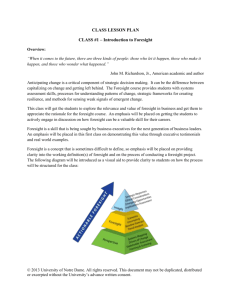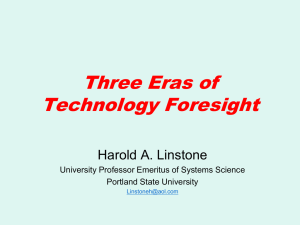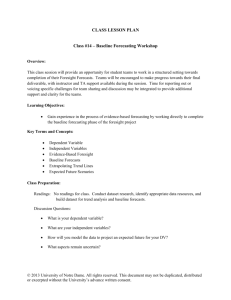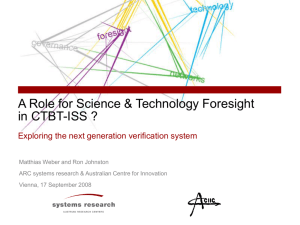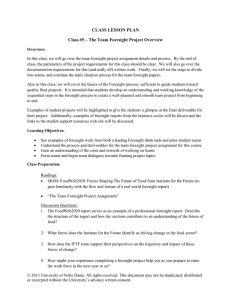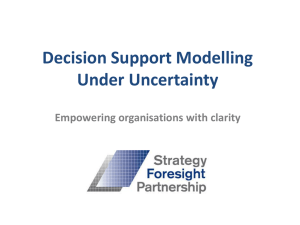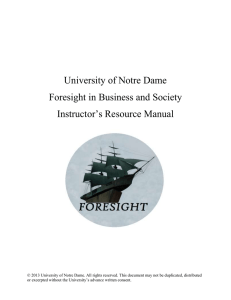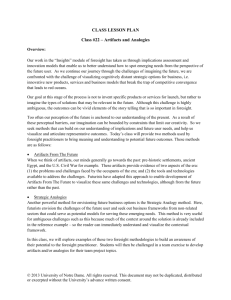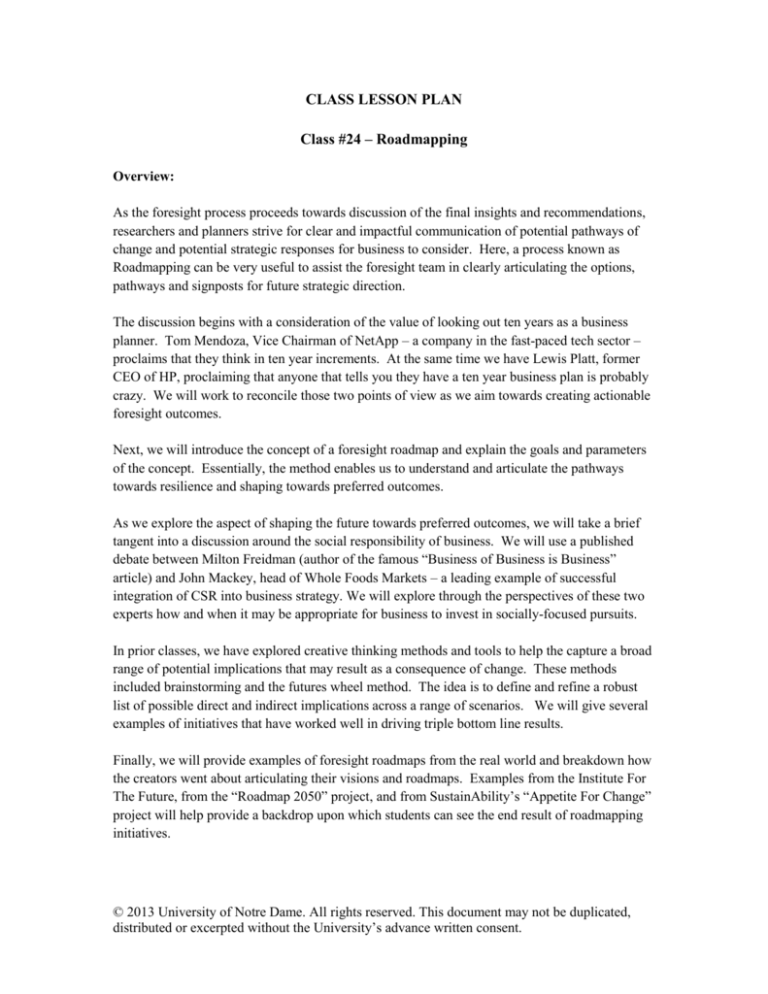
CLASS LESSON PLAN
Class #24 – Roadmapping
Overview:
As the foresight process proceeds towards discussion of the final insights and recommendations,
researchers and planners strive for clear and impactful communication of potential pathways of
change and potential strategic responses for business to consider. Here, a process known as
Roadmapping can be very useful to assist the foresight team in clearly articulating the options,
pathways and signposts for future strategic direction.
The discussion begins with a consideration of the value of looking out ten years as a business
planner. Tom Mendoza, Vice Chairman of NetApp – a company in the fast-paced tech sector –
proclaims that they think in ten year increments. At the same time we have Lewis Platt, former
CEO of HP, proclaiming that anyone that tells you they have a ten year business plan is probably
crazy. We will work to reconcile those two points of view as we aim towards creating actionable
foresight outcomes.
Next, we will introduce the concept of a foresight roadmap and explain the goals and parameters
of the concept. Essentially, the method enables us to understand and articulate the pathways
towards resilience and shaping towards preferred outcomes.
As we explore the aspect of shaping the future towards preferred outcomes, we will take a brief
tangent into a discussion around the social responsibility of business. We will use a published
debate between Milton Freidman (author of the famous “Business of Business is Business”
article) and John Mackey, head of Whole Foods Markets – a leading example of successful
integration of CSR into business strategy. We will explore through the perspectives of these two
experts how and when it may be appropriate for business to invest in socially-focused pursuits.
In prior classes, we have explored creative thinking methods and tools to help the capture a broad
range of potential implications that may result as a consequence of change. These methods
included brainstorming and the futures wheel method. The idea is to define and refine a robust
list of possible direct and indirect implications across a range of scenarios. We will give several
examples of initiatives that have worked well in driving triple bottom line results.
Finally, we will provide examples of foresight roadmaps from the real world and breakdown how
the creators went about articulating their visions and roadmaps. Examples from the Institute For
The Future, from the “Roadmap 2050” project, and from SustainAbility’s “Appetite For Change”
project will help provide a backdrop upon which students can see the end result of roadmapping
initiatives.
© 2013 University of Notre Dame. All rights reserved. This document may not be duplicated,
distributed or excerpted without the University’s advance written consent.
Learning Objectives:
Understand the concept of the Sustainability Sweet Spot and understand how this concept
can be used in assessing potential implications of change.
Understand how the drivers of value creation are changing and how companies can
embrace these aspects to capitalize on change in the future
Understand how foresight skills can help spot emerging triple bottom line opportunities
for business.
Understand the complex tradeoffs regarding sustainability decisions and gain an
appreciation of how these tradeoffs may apply when considering future strategic
responses to change.
Key Concepts:
Triple Bottom Line
Corporate Social Responsibility
Sustainability Sweet Spot
Stakeholders
Value Creation
Backcasting
Resilience
Shaping
Signposts
Class Preparation:
Readings:
"Rethinking the Social Responsibility of Business" – Milton Friedman, John Mackay,
T.J. Rogers (Reason Magazine)
Discussion Questions
1. In your point of view, what is the social responsibility of business?
2. Where do Freidman and Mackey agree regarding the social responsibility of business?
Where do they disagree?
3. In regard to the topic for your foresight project, what social and environmental challenges
will business confront? Should these challenges be a priority for the leaders of these
companies?
© 2013 University of Notre Dame. All rights reserved. This document may not be duplicated,
distributed or excerpted without the University’s advance written consent.
INSTRUCTOR GUIDELINES
Class Timeline:
5 Minutes – Quote of the Day and Intro
5 Minutes – “Ten Year Increments” discussion
10 Minutes – Components of a Foresight Roadmap
20 Minutes – What is the Social Responsibility of Business?
10 Minutes – Triple Bottom Line Examples
20 Minutes – Roadmap Examples
5 Minutes – Wrap Up and Preview of Upcoming Class
Classroom Activities / Short Assignments:
Lead a compare/contrast discussion regarding the social responsibility of business. Challenge the
students to identify where the two arguments overlap – and lead them towards the recognition
that both experts are talking about ways to create value in business. Get them to recognize that in
order for sustainability and social responsibility to be a paradigm shift for business – the
initiatives need to generate business value.
Multimedia and other supplements
See slides for web videos from companies that are examples of corporate social responsibility –
Patagonia/One Percent For The Planet, Fair Trade Sports, Charity Trucks, Kick Start.
Roadmap 2050 video
o http://www.youtube.com/watch?v=xOGvpZINxjI
Appetite for Change web video
o http://www.sustainability.com/library/appetite-for-change
Notes and Perspectives:
For the Appetite For Change video, there is an accompanying report that is available for free
download off the SustainAbility web site using this link:
http://www.sustainability.com/library/appetite-for-change You will be prompted to set up a
login, but there is no charge. Instructors may also want to post this report as a sample
industry foresight report.
© 2013 University of Notre Dame. All rights reserved. This document may not be duplicated,
distributed or excerpted without the University’s advance written consent.



